
Home - Search - Browse - Alphabetic Index: 0- 1- 2- 3- 4- 5- 6- 7- 8- 9
A- B- C- D- E- F- G- H- I- J- K- L- M- N- O- P- Q- R- S- T- U- V- W- X- Y- Z
DFH-1
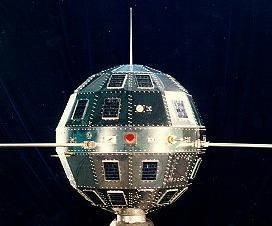 DFH-1 Credit: via Sven Grahn |
AKA: Mao;Shi Jian. Status: Operational 1969. First Launch: 1969-11-16. Last Launch: 1971-03-03. Number: 3 . Gross mass: 173 kg (381 lb). Height: 1.00 m (3.20 ft). Span: 1.00 m (3.20 ft).
The second included a magnetometer and cosmic/x-ray detectors in place tune generator.
In 1958 the Chinese Academy of Sciences formed a small task group, code named 581, headed by Tsien Hsue-Shen (Qian Xuesen) and Zhao Jiuzhang, to design China's first satellite. In 1965 the State Council reviewed the draft 'Plan for the Development of China's Artificial Satellites'. The evaluation group, code named 651, discussed the objectives and operational tasks of the DFH-1 (Dongfanghong, East is Red) satellite. The DFH-1 would be a scientific test satellite and include transmission of radio signals. Research and development of the satellite and its CZ-1 launch rocket began in November 1966. The planned schedule was severely disrupted by the Cultural Revolution. The DFH-1 as originally designed would have a mass of 150 kg. The last stage of the booster was equipped with an 'observation skirt' that would deploy to increase its reflectivity.
In 1968, the Chinese Academy of Space Technology (CAST) was established and put in charge of realizing the DFH-1. It was orbited as the first Chinese artificial satellite on 24 April 1970. The satellite was composed of seven subsystems - structure, thermal control, power supply, 'The East Is Red' tune generating device, short wave telemetry, tracking and radio, and attitude measurement. The total mass of the spin stabilized satellite was 173 kg. Its shape was similar to the American Telstar, a seventy-two-face polyhedron 1 m in diameter. The satellite was spin stabilized during its flight in space. Min Guiyong headed the development staff at CAST in qualifying the satellite for space flight, including thermal vacuum simulation tests.
After reaching orbit, the satellite drew power from on-board batteries and began broadcasting the 'East is Red' Chinese national anthem at 20.009 MHz. DFH-1 had a design life of 15 days. Other systems functioned nominally and recorded some physics measurements. The third stage of CZ-1 had an "observation skirt" mounted to increase its reflectivity to magnitude 2 to 3. The brightness of the DFH-1 itself was much fainter, ranging from magnitude 5 to 8. At its brightest, DFH-1 was barely visible to the naked eye from a very dark location. At its faintest, the satellite was beyond the threshold of naked eye visibility. The primary purpose of the satellite was to conduct tests of communications satellite technology.
On 3 March, 1971, the second DFH-1, designated SJ-1 (Practice-1) satellite was launched. The design life of the satellite was one year, but it operated in space for more than 8 years until its decay on 11 June, 1979. During the entire period the solar power supply system, thermal control system and long-term telemetry system continued to function. The second DFH was 48 kg heavier, covered with solar cells, and was able to continuously transmit data at 19.995 MHz. It included a magnetometer and cosmic/x-ray detectors in place of the 'East is Red' tune generator on the first DFH.
More at: DFH-1.
Family: Communications technology sat, Technology. Country: China. Launch Vehicles: DF-3, Chang Zheng 1. Launch Sites: Jiuquan, Jiuquan LA2A. Agency: MAI, CAST, CASC. Bibliography: 2, 434, 5, 532, 534, 6, 12206.
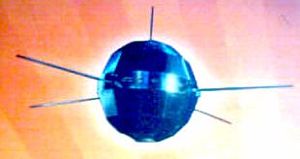 | DFH-1 Credit: © Mark Wade |
 | DFH-1 Credit: © Mark Wade |
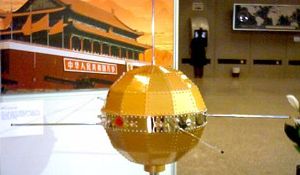 | DFH-1 Credit: © Mark Wade |
 | DFH-1 in Orbit |
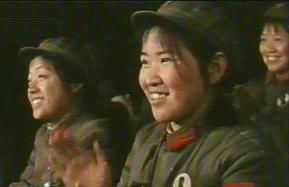 | DFH-1 - people's joy |
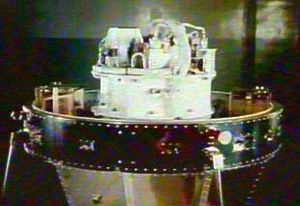 | DFH-1 in Shroud |
 | DFH-1 Reflector |
 | DFH-1 solar reflecto |
 | DFH-1 in Shroud |
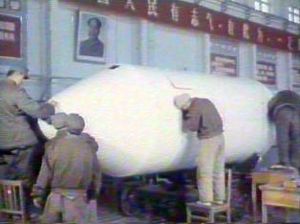 | DFH-1 in Shroud |
 | DFH-1 in Shroud |
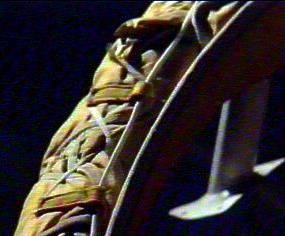 | DFH-1 Reflector |
 | DFH Mao 1 Credit: Manufacturer Image |
 | SJ-1 Credit: Manufacturer Image |
During 1962 - .
- First Chinese trainees in satellite technology - . Nation: China. Related Persons: Tsien. Spacecraft: DFH-1. Four engineers from the Shanghai Institute of Machine and Electrical Design receive the first Chinese training in satellite design..
January 1965 - . LV Family: DF-3. Launch Vehicle: Chang Zheng 1.
- Project 651 - . Nation: China. Related Persons: Tsien. Spacecraft: DFH-1. Tsien presents his plan for a Chinese satellite to the Central Committee..
1965 April 29 - . LV Family: DF-3. Launch Vehicle: Chang Zheng 1.
- Chinese satellite plans. - . Nation: China. Related Persons: Tsien. Spacecraft: DFH-1. Tsien says he can orbit a Chiense satellite in 1970 or 1971..
1965 August 10 - . LV Family: DF-3. Launch Vehicle: Chang Zheng 1.
- Project 651 - . Nation: China. Related Persons: Tsien. Spacecraft: DFH-1. Zhou En Lai approves the plan for the construction and launch of China's first satellite..
May 1966 - . LV Family: DF-3. Launch Vehicle: Chang Zheng 1.
- DFH-1 satellite defined. - . Nation: China. Related Persons: Tsien. Spacecraft: DFH-1. The satellite will be launched by the CZ-1 launch vehicle, a DFH-2 IRBM with a new upper stage..
1967 January 23 - . LV Family: DF-3. Launch Vehicle: Chang Zheng 1.
- Tsien removed - .
Nation: China.
Related Persons: Tsien.
Spacecraft: DFH-1.
Tsien was overthrown by the 916 (Mao) Clique. Ye Zhengguang, a missile engineer, with the approval off Zhou En Lai and Marshall Nie, confronts Tsien and removes him from his post as head of the Seventh Ministry. Minister of Machine Building Wang Bingzhang was also deposed. However Tsien was protected by the leadership, made a 'Vice Minister', and claimed he supports the coup. Wang refused to cooperate and would not hand over the chops of his office to the 916 Clique.
1968 June 8 - . LV Family: DF-3. Launch Vehicle: Chang Zheng 1.
- Height of Cultural Revolution - . Nation: China. Related Persons: Tsien. Spacecraft: DFH-1. Yao Tongbin, a metallurgist at he Seventh Ministry, is beaten to death by Red Guards. Zhou En Lai intervenes, putting the top fifty missile scientists under this protection..
1969 November 16 - . Launch Site: Jiuquan. Launch Complex: Jiuquan LA2A. LV Family: DF-3. Launch Vehicle: Chang Zheng 1. FAILURE: The program distributor in the second stage broke down. The rocket crashed into the earth within view of the launch site after 69 seconds of flight.. Failed Stage: 2.
- First Chinese satellite launch attempt ends in failure. - .
Payload: DFH 1. Mass: 170 kg (370 lb). Nation: China.
Class: Technology.
Type: Navigation technology satellite. Spacecraft: DFH-1.
COSPAR: F691116Z.
The launch vehicle arrived at the site on 18 March 1969. The objective was to launch China's first satellite before Japan lofted its counterpart. Ren Xinmin had obtained this specific order from Deng Hsiao Peng. Great difficulties were encountered in the middle of the Cultural Revolution, including the sending of most of the satellite engineers to work on irrigation ditch construction in the provinces. The skirt for the satellite, designed to make it easily visible to ground observors, had to be made from a special silk produced in a factory without the knowledge of the Red Guards. The engineers went by bus to a department store in Beijing to study an imported folding umbrella as a model for the deployment mechanism -- they could not afford to buy it. The entire launch was kept secret until a documentary was released in 2001.
1970 April 24 - . LV Family: DF-3. Launch Vehicle: Chang Zheng 1.
- DFH-1 satellite launch authorised. - . Nation: China. Related Persons: Tsien. Spacecraft: DFH-1. Mao personally authorises the launch..
1970 April 24 - . 13:35 GMT - . Launch Site: Jiuquan. Launch Complex: Jiuquan LA2A. LV Family: DF-3. Launch Vehicle: Chang Zheng 1.
- DFH Mao 1 - .
Payload: DFH 1. Mass: 173 kg (381 lb). Nation: China.
Agency: MAI.
Class: Technology.
Type: Navigation technology satellite. Spacecraft: DFH-1.
USAF Sat Cat: 4382 . COSPAR: 1970-034A. Apogee: 2,162 km (1,343 mi). Perigee: 434 km (269 mi). Inclination: 68.40 deg. Period: 111.60 min.
The final campaign to launch China's first satellite began on April 1, 1970, when two DFH-1 satellites and the CZ-1 rocket arrived by train at the Jiuquan Satellite Launch Centre. This was over a year after the first attempt in 1969. Ren Xinmin was project leader and Qi Faren was leader of the DFH-1 experiment team. On April 2 Premier Zhou Enlai called a special meeting in the Great Hall of the People in Beijing for a final readiness review of the satellite and the launch vehicle. Zhou wanted special guarantees that the satellite would transmit the march 'The East is Red' from orbit.
On the morning of April 24, 1970, the first and second stages of CZ-1 were loaded with propellant and stacked. The satellite was mated to the spin-stabilized solid-propellant third stage, and the launcher entered the final eight hours of launch preparation. Weather forecast for the launch at 9:30 p.m. called for clouds at above 7,000 meters and a wind speed of less than 4 to 5 meters per second.
The historic launch came at 9:35 p.m. local time (13:35 UTC). Upon hearing the command "ignition", a launch controller pressed the button to start the rocket engines. The three-stage CZ-1, which was 29.46 meters tall and had a maximum diameter of 2.25 meters, lifted off the launch pad with a thrust of 104 tonnes. Liftoff weight of the CZ-1 was 81.5 tonnes. Rocket expert Shen Jianan recounted that "..as soon as I saw the liftoff on the TV screen inside the bunker, I ran outside. I could only see the beautiful rocket lighting up the night sky and streaking towards the southeast. I ran back inside to listen to the transmissions. Broadcasting on the speaker were status reports like 'capturing target', 'nominal tracking', 'nominal flight', 'nominal second and third stage separation'..." Thirteen minutes after launch, at 9:48 p.m., mission control announced "...satellite and rocket stage separation, satellite enters orbit...the bunker was filled with cheers".
China became the fifth nation after the former Soviet Union, the United States, France and Japan to achieve an indigenous space launch capability. At 9:50 p.m., the National Broadcasting Bureau announced the acquisition of the tune 'East is Red' from the satellite loud and clear. In the following days, the People's Central Broadcasting radio and newspapers in Beijing announced and printed worldwide times of DFH-1 and CZ-1 third stage passages, and directions of travel in the sky. Senior officials in Beijing dispatched a chartered plane to JSLC to bring back Qi and other scientists. In the International Labour Day celebration on May 1, Chairman Mao and Premier Zhou warmly welcomed them at the Tiananmen Square.
1971 March 3 - . 12:15 GMT - . Launch Site: Jiuquan. Launch Complex: Jiuquan LA2A. LV Family: DF-3. Launch Vehicle: Chang Zheng 1.
- SJ-1 - . Payload: Shi Jian 1. Mass: 221 kg (487 lb). Nation: China. Agency: MAI. Class: Technology. Type: Communications technology satellite. Spacecraft: DFH-1. Decay Date: 1979-06-17 . USAF Sat Cat: 5007 . COSPAR: 1971-018A. Apogee: 1,833 km (1,138 mi). Perigee: 265 km (164 mi). Inclination: 69.80 deg. Period: 106.10 min. Similar in appearance to the American Telstar and conducted communications technology tests..
Back to top of page
Home - Search - Browse - Alphabetic Index: 0- 1- 2- 3- 4- 5- 6- 7- 8- 9
A- B- C- D- E- F- G- H- I- J- K- L- M- N- O- P- Q- R- S- T- U- V- W- X- Y- Z
© 1997-2019 Mark Wade - Contact
© / Conditions for Use